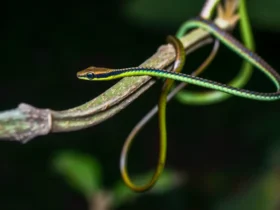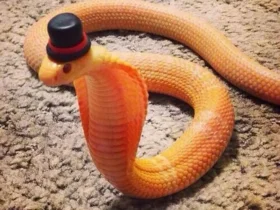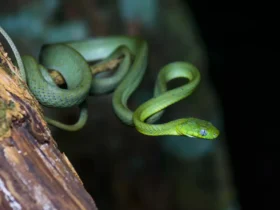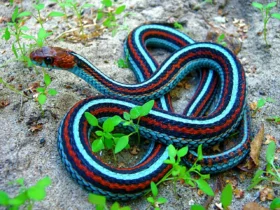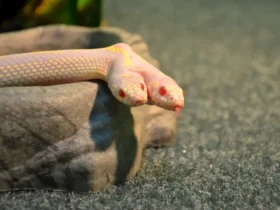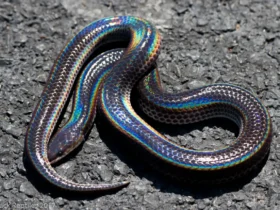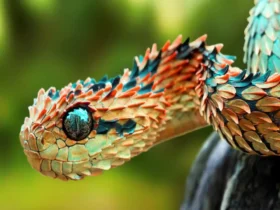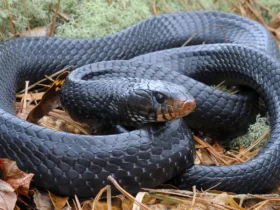The Blue-Lipped Sea Krait (Laticauda laticaudata) is a mesmerizing and venomous sea snake that inhabits the warm tropical waters of the Indo-Pacific region. Known for its vibrant blue lips, sleek body, and adaptability to both land and water, this species has captured the imagination of marine enthusiasts and researchers alike. In this article, we will delve into the unique characteristics and behavior of the Blue-Lipped Sea Krait, shedding light on its captivating nature.
Blue-Lipped Sea Krait images
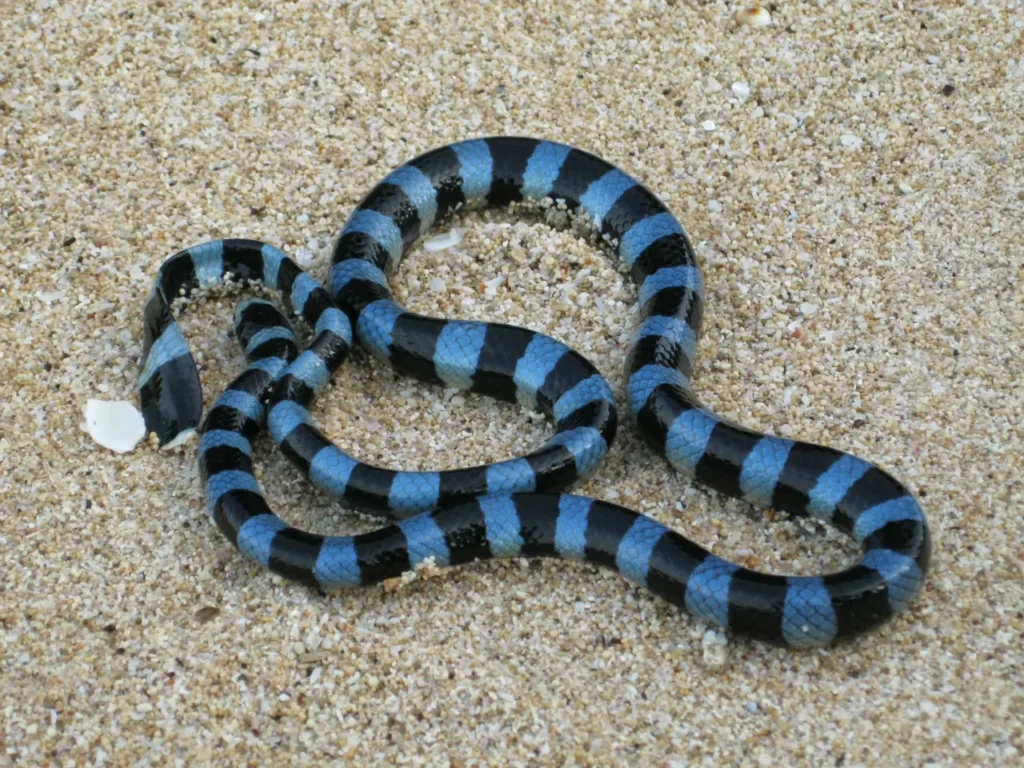
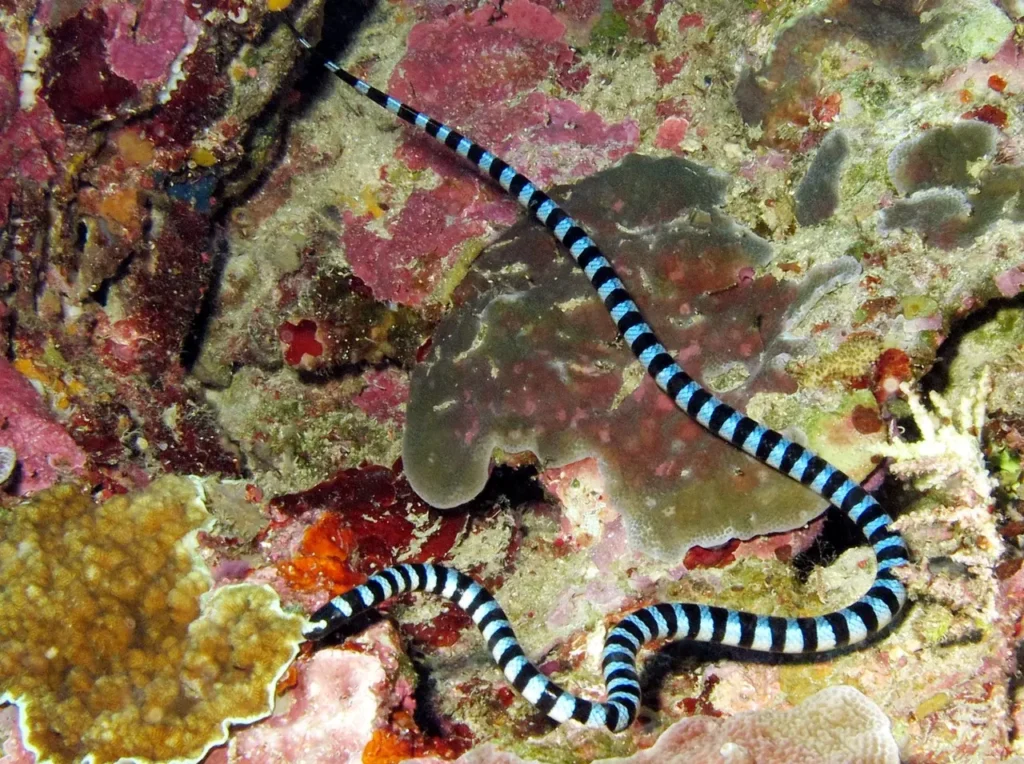
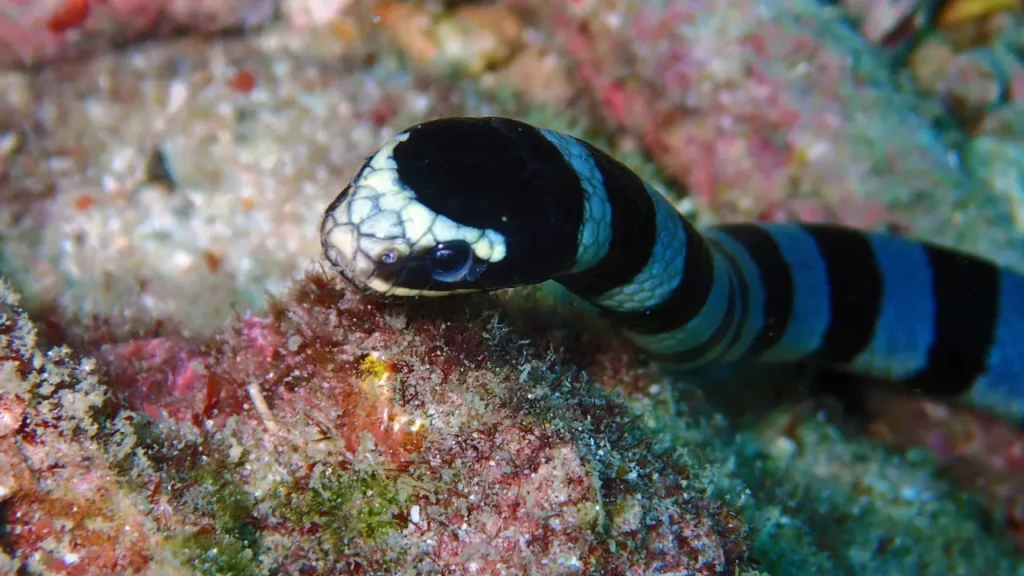
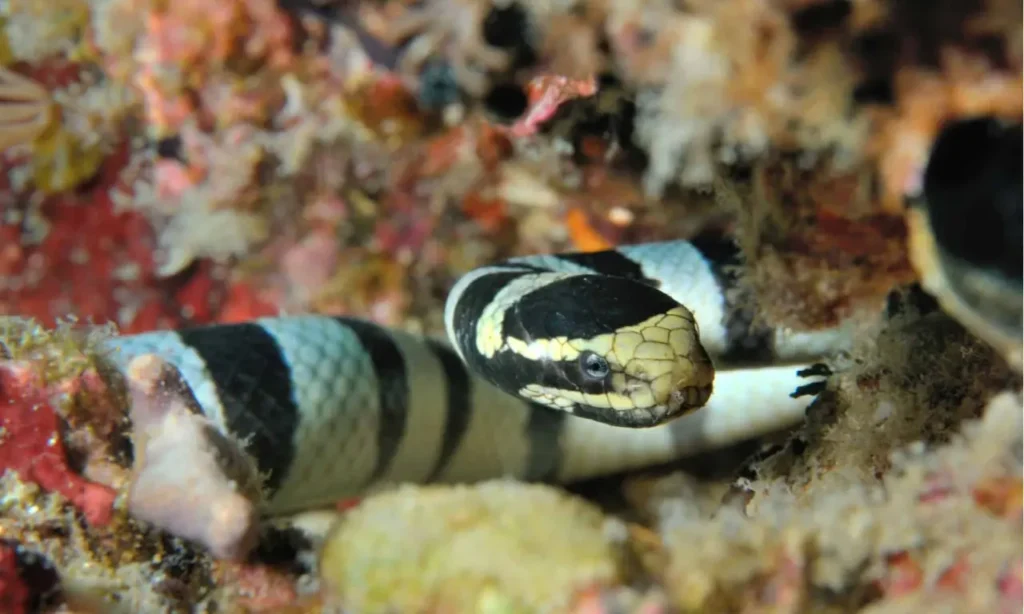
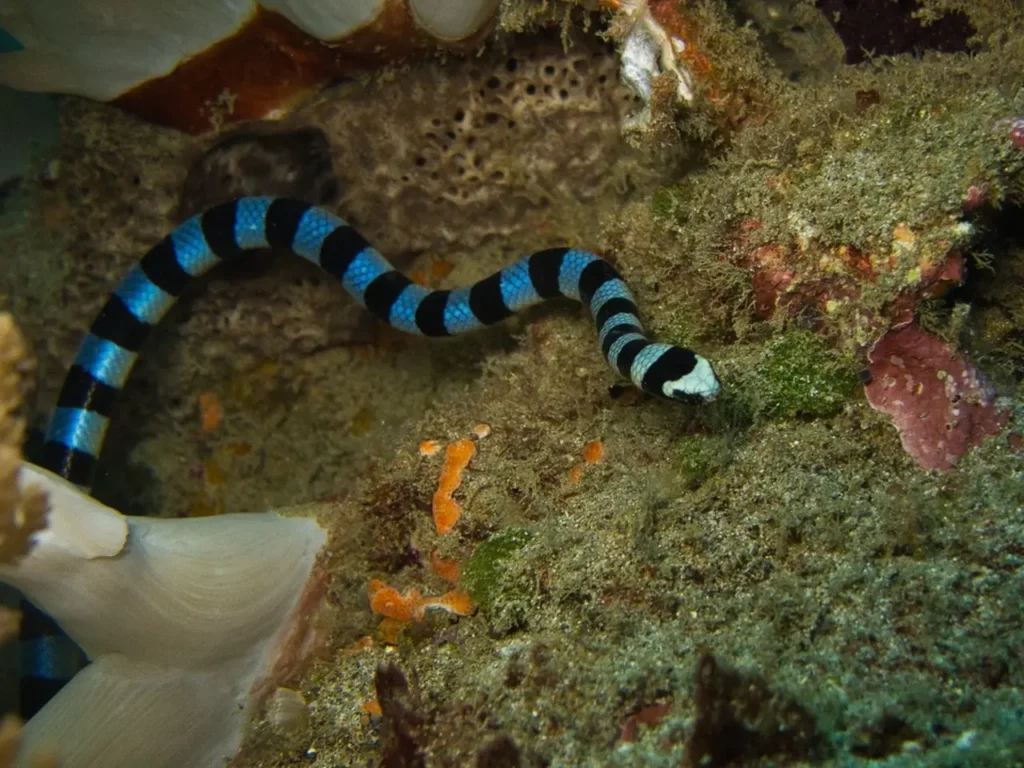
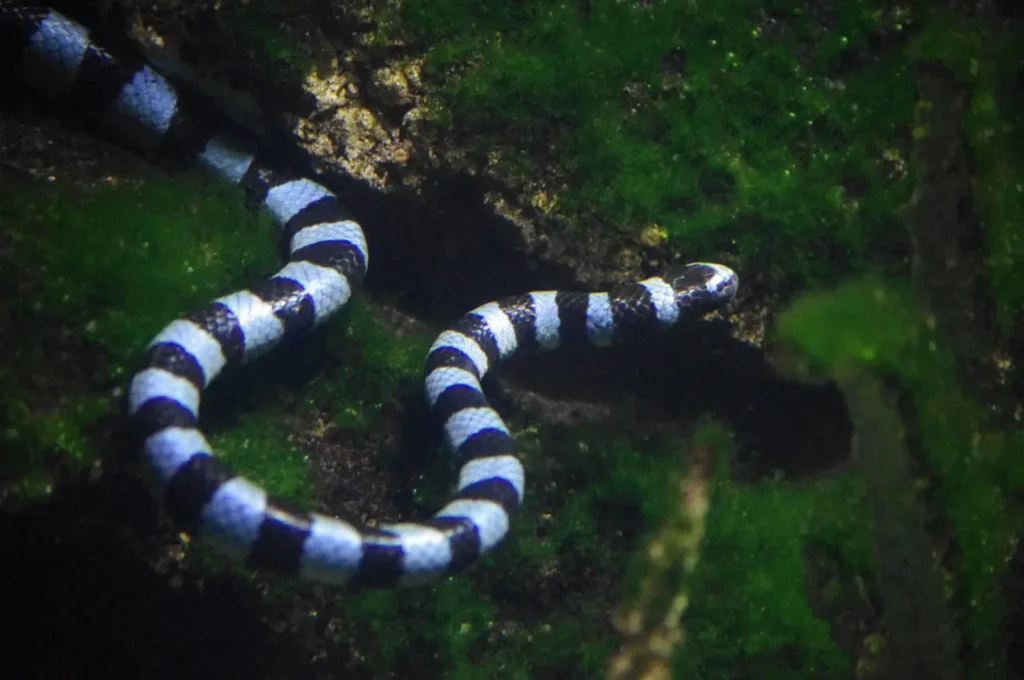
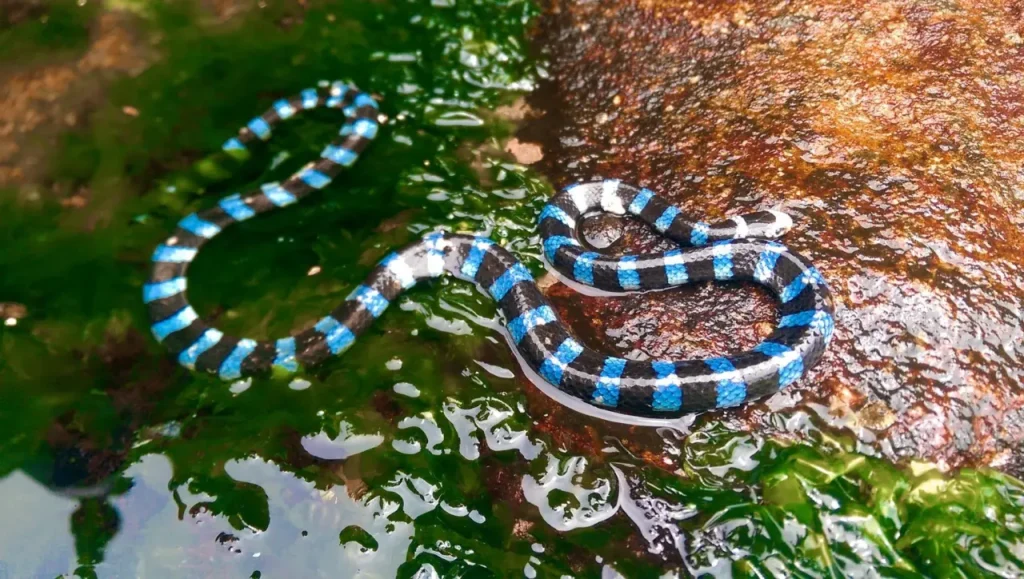
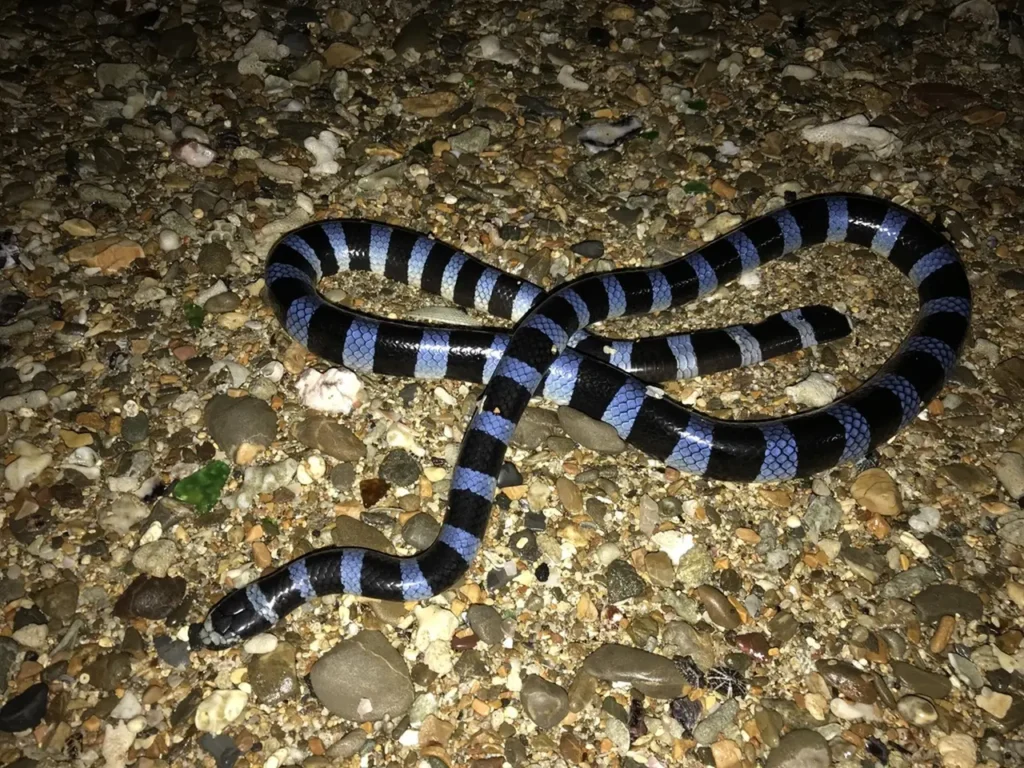
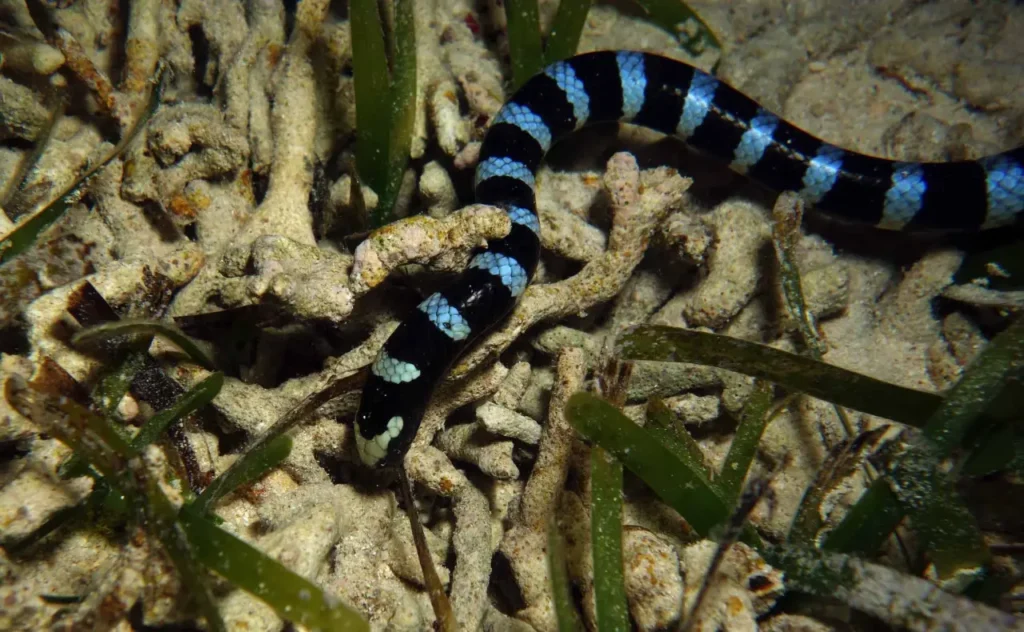
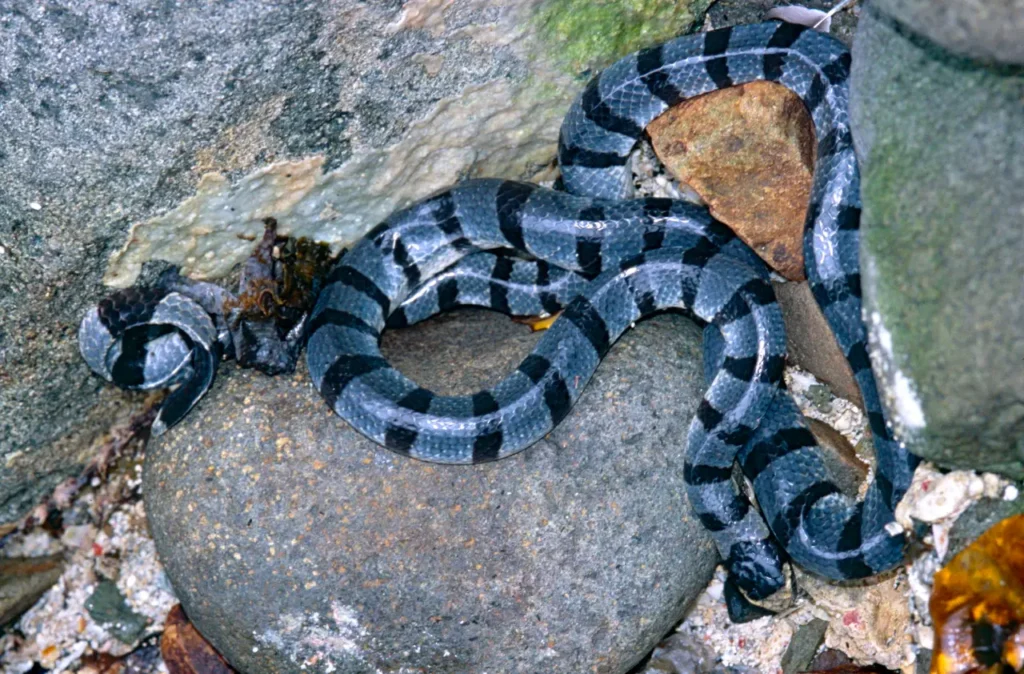
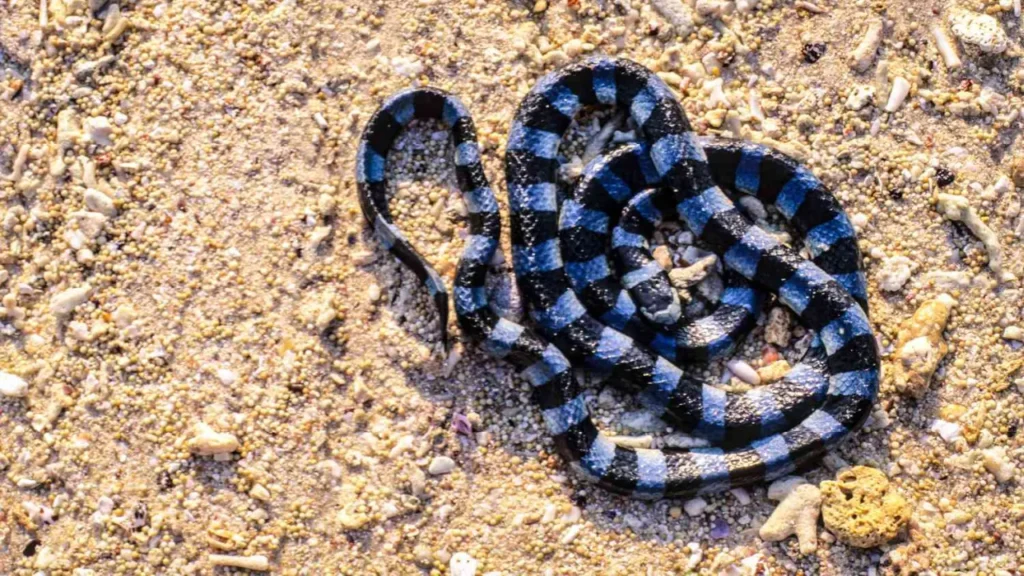
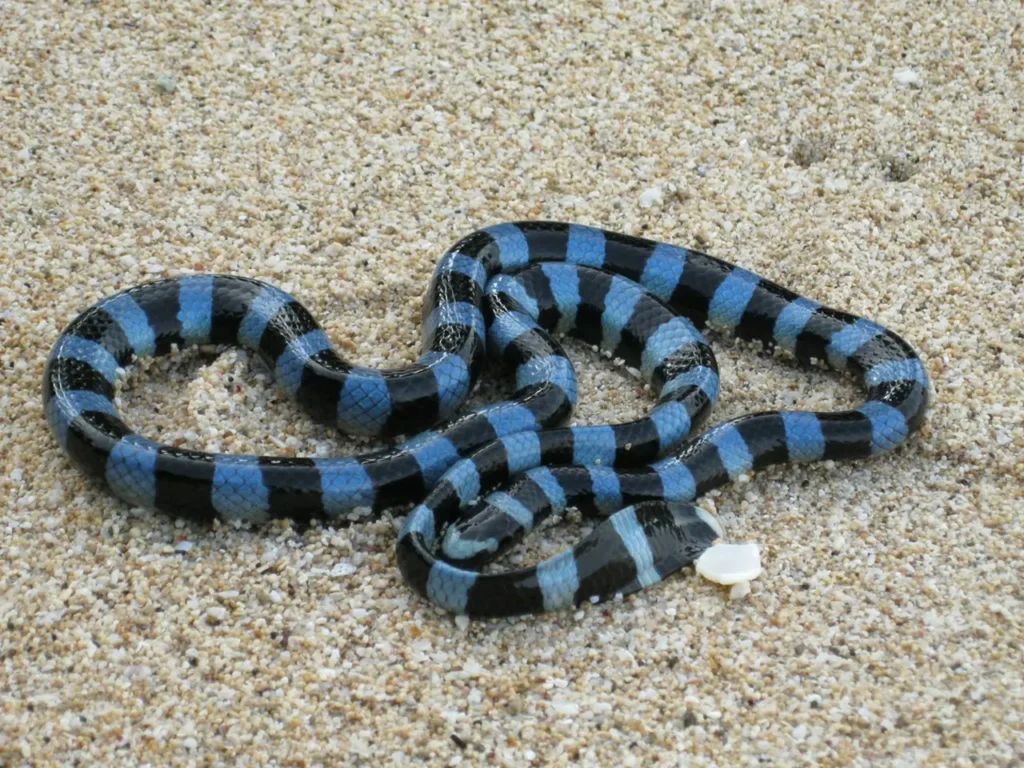
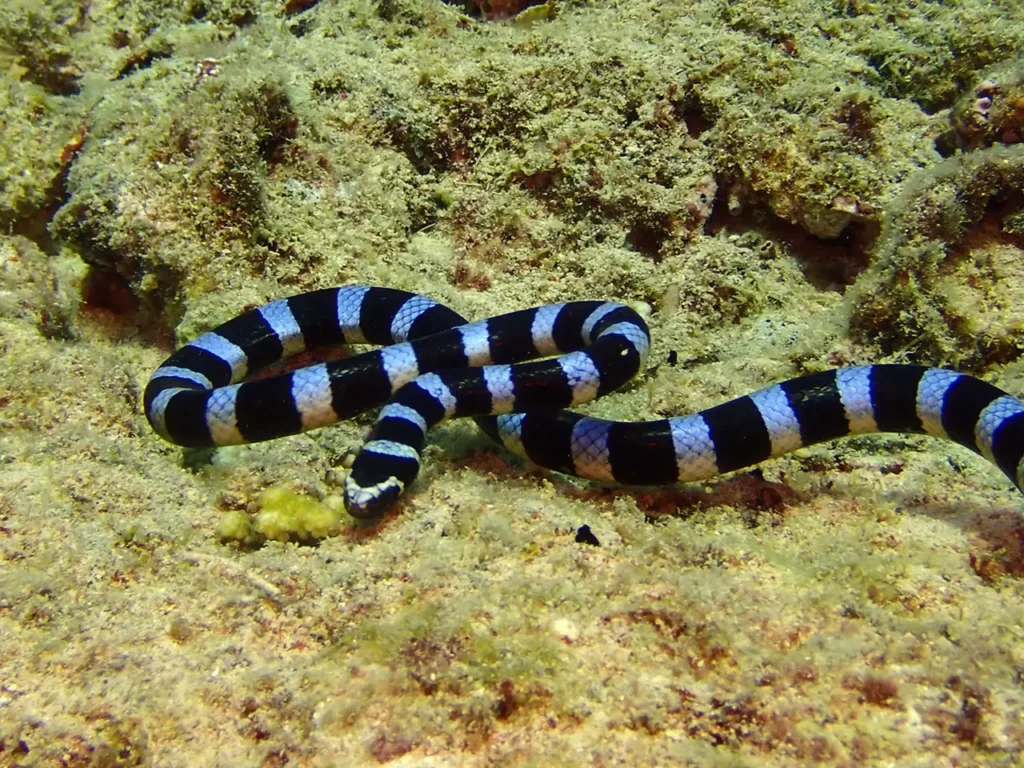
Physical Characteristics
The Blue-Lipped Sea Krait is an elegant snake with a slender body, growing to an average length of around 1.5 meters (5 feet). It possesses a distinctive color pattern, featuring a dark bluish-black back with lighter shades on its sides, transitioning to a striking yellow or white belly. Its most striking feature is undoubtedly its vibrant blue lips, which stand out against the darker hues of its body. These unique colorations are nature’s way of signaling to other creatures that it possesses a potent venom.
Habitat and Range
The Blue-Lipped Sea Krait is highly adapted to an aquatic lifestyle, spending most of its life in the ocean. It is found in the shallow coastal waters and coral reefs of the Indian Ocean, the Red Sea, and the Pacific Ocean, from Japan and Australia to East Africa. Despite being predominantly a marine creature, it occasionally ventures onto land, seeking refuge and warmth on sandy beaches or in crevices among rocks.
Diet and Feeding Habits
As a carnivorous predator, the Blue-Lipped Sea Krait feeds primarily on fish and eels. It possesses a powerful jaw and specialized teeth designed to grip and subdue its prey. With its excellent swimming abilities, the snake stealthily hunts in coral reefs and along rocky coastlines, relying on its slender body and paddle-shaped tail to maneuver through the water with remarkable precision. Once it captures its prey, it delivers a quick and potent bite, injecting venom that immobilizes the victim, allowing the sea krait to consume its meal at its leisure.
Reproduction and Life Cycle:
The reproductive behavior of the Blue-Lipped Sea Krait is a fascinating aspect of its life cycle. This species is oviparous, meaning it lays eggs rather than giving birth to live young. Mating occurs in water, where males compete for the attention of females. After mating, the female searches for a suitable nesting site, often choosing sandy beaches or vegetation-covered areas above the high tide line. There, she deposits a clutch of eggs, which she carefully covers with sand or leaves to protect them from predators. The eggs incubate for several weeks until they hatch, and the young sea kraits emerge, ready to embark on their own aquatic journey.
Venom and Defense Mechanisms
While the Blue-Lipped Sea Krait possesses a potent venom, it is generally not aggressive towards humans unless provoked. Its venom contains neurotoxins that affect the nervous system, causing paralysis and potentially leading to respiratory failure. However, due to its docile nature and limited encounters with humans, bites are relatively rare. When threatened, the sea krait adopts a defensive posture, coiling its body and displaying its open mouth as a warning. This behavior, along with its distinctive coloration, serves as a deterrent to potential predators.
Final Thought
The Blue-Lipped Sea Krait is a captivating creature that showcases the remarkable adaptations of marine life. Its striking appearance, venomous nature, and ability to transition between land and water make it a subject of fascination for researchers and nature enthusiasts alike. By understanding the unique characteristics and behavior of this species, we gain valuable insights into the diverse and awe-inspiring world that exists beneath the surface of our oceans.
